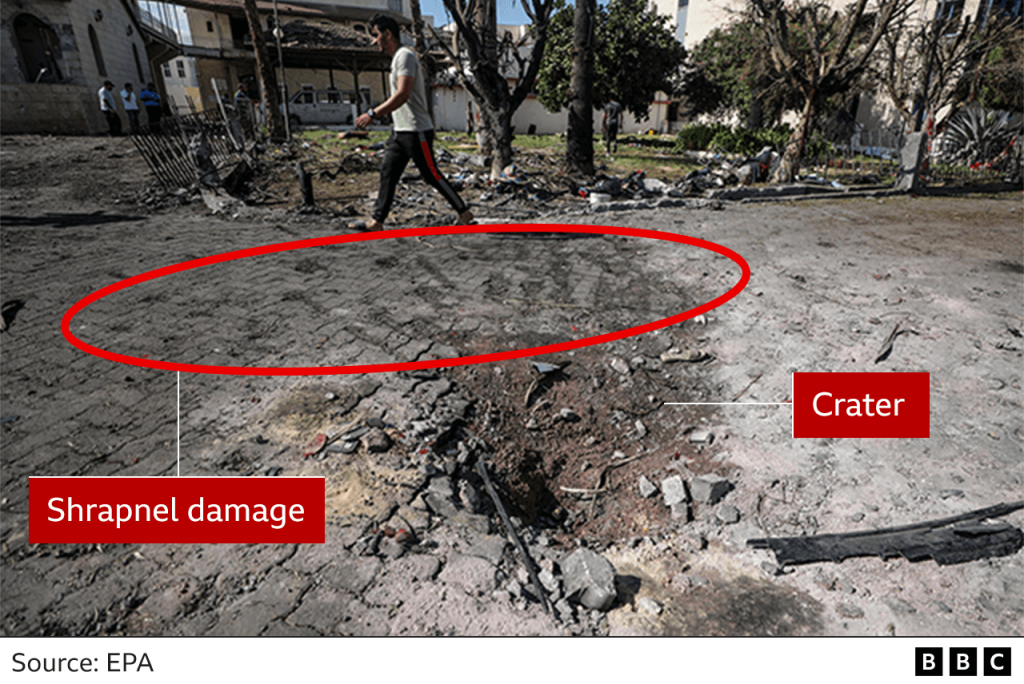
…As I indicated last week, we have taken care to look at all the evidence currently available. Mr Speaker, I can now share our assessment with the House. On the basis of the deep knowledge and analysis of our intelligence and weapons experts…the British government judges that the explosion was likely caused by a missile – or part of one – that was launched from within Gaza towards Israel.
The misreporting of this incident had a negative effect in the region – including on a vital US diplomatic effort – and on tensions here at home. We need to learn the lessons and ensure that in future there is no rush to judgment.
This is how the British Prime Minister addressed the House of Commons, about the horrific Al Ahli attack, on October 23, 2023.
You’ll probably have registered the qualifier ‘likely’ used in the statement. It’s curious, because in recent times the official conclusions of British Intel agencies on high profile international incidents such as this, have often been prefaced with ‘highly likely’.
For what it’s worth, my own assessment remains that this was an intentional attack by the Israeli Air Force with a bomb and not a missile. Others with greater investigatory experience and skills than me have also reached this conclusion reviewing both the impact scene and video footage of the night skies. See this comprehensive report by Michael Kobs.

Although the type of bomb used is not 100% confirmed, as I speculated in the week following the attack, it was most probably a variant of the GBU-39 ‘Small Diameter Bomb’. Photos and videos of the scene the next morning reveal pieces of debris that could fit with the ‘Diamond Back’ wing assembly employed on these munitions. (See also the updates on my last post).


I suspect the object bottom right in the BBC graphic is a part of a diamond back’s cover.
I wrote before that a variant of this type of smart bomb – the GBU-39 (A/B) Focused Lethality Munition (FLM) – had properties that could fit with the observed general characteristics of the blast.

Michael Kobs’ report is conclusive that the blast was not an air burst. Although there are some unusual features of the impact site indicating it was probably not a regular high explosive munition with a conventional bomb casing. The Boeing FLM with its Dense Inert Metal Explosive looks the most likely candidate. As a Defense Industry Daily article on the FLM informed:
A carbon-fiber bomb body disintegrates instead of fragmenting, which adds explosive force nearby but largely removes shrapnel issues beyond. Inside, metal particles turn the explosive material into short-range projectiles.
This, in my view, accounts best for the unusual features at the impact scene – wide effects, but low amount of fragmentation marks. Videos of the aftermath that evening are truly shocking. Even if the death toll according to authorities in Gaza might be inflated, the courtyard was evidently packed with families.
To me, all this now seems fairly clear. What I do find hard to understand, though, is how the initial sense of media reporting on the night could have seen such a ready volte-face.
A BBC TV reporter who said, as the horrific aftermath was unfolding:
‘It’s hard to see what else this could be really, given the size of the explosion, other than an Israeli airstrike or several airstrikes because when we’ve seen rockets fired out of Gaza, we never see explosions of that scale. ‘We might see half a dozen or maybe a few more people being killed in such rocket attacks but we’ve never seen anything on the scale of this sort of explosion on the video I was watching earlier, which as you say, is still to be verified.’
…was, in the days following, publicly shamed for this quite reasonable and appropriate assessment.
BBC senior management would apologise for ‘speculating’, as the Israelis put out a gish-gash of self-contradictory messaging in their attempts to deflect the blame. Kobs’ report demolishes these claims, along with those of a London based academic ‘research agency.’
But could the analysts of official British agencies have earnestly reached the conclusion that it was a missile from Gaza. And what does their term “likely caused” really imply?
If we assume that an assessment of ‘highly likely’ would be intended to signal a high degree of confidence – as their US counterparts were said to have in the same conclusions. Does ‘likely’ signal just moderate confidence, or less perhaps?
A worthwhile (2017) article from former Canadian Intel analyst Patrick Armstrong – ‘When Intelligence Isn’t‘ – can help us understand what could be going on behind pronouncements like this from officialdom. In these times, national security analysts can have high confidence, most of all, in knowing what their paymasters expect them to say.
It seems likely to me then, that some of the British analysts felt uncomfortable and wanted to signal their distance from the conclusion they inevitably had to draw.
The British establishment hasn’t exactly been coy about showing where its sympathies lie since Hamas’ raids on October 7. A dissenting voice from within its ranks who called for a ceasefire in parliament quickly experienced a ‘fall from grace‘.

Will the increasingly massive civilian death toll in Gaza prompt the illumination of Downing Street with the Palestinian flag in a display of solidarity? It seems unlikely, given that widespread calls for the British Government to demand a ceasefire are dismissed by the leadership of both main parties. That would, they assure the public, only be ‘perfomative’ and ‘symbolism’ and wouldn’t really achieve anything.
For more on the Al Ahli Hospital Bombing see the A Closer Look on Syria wiki pages